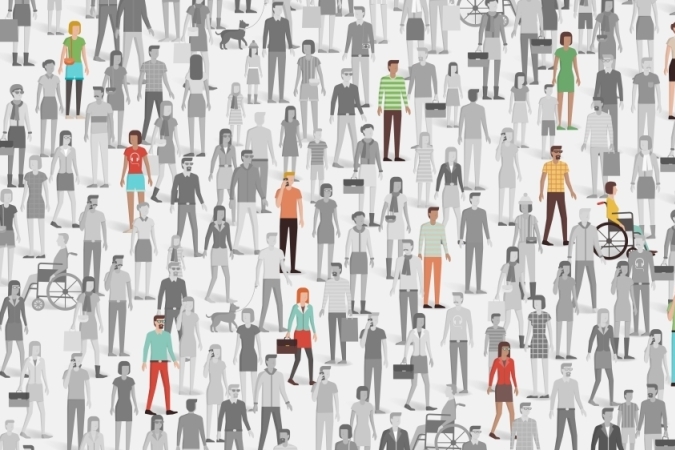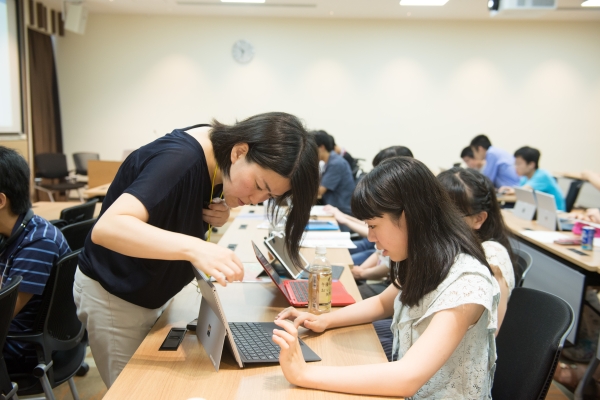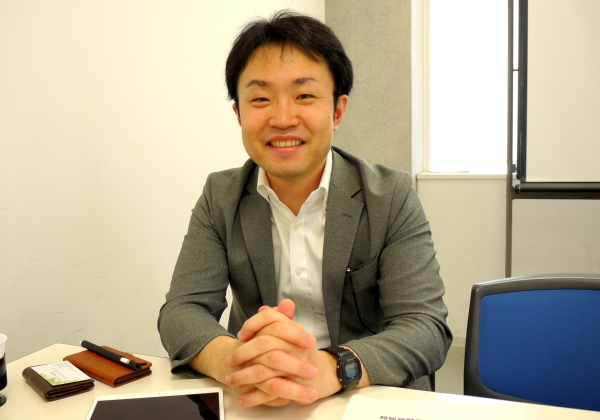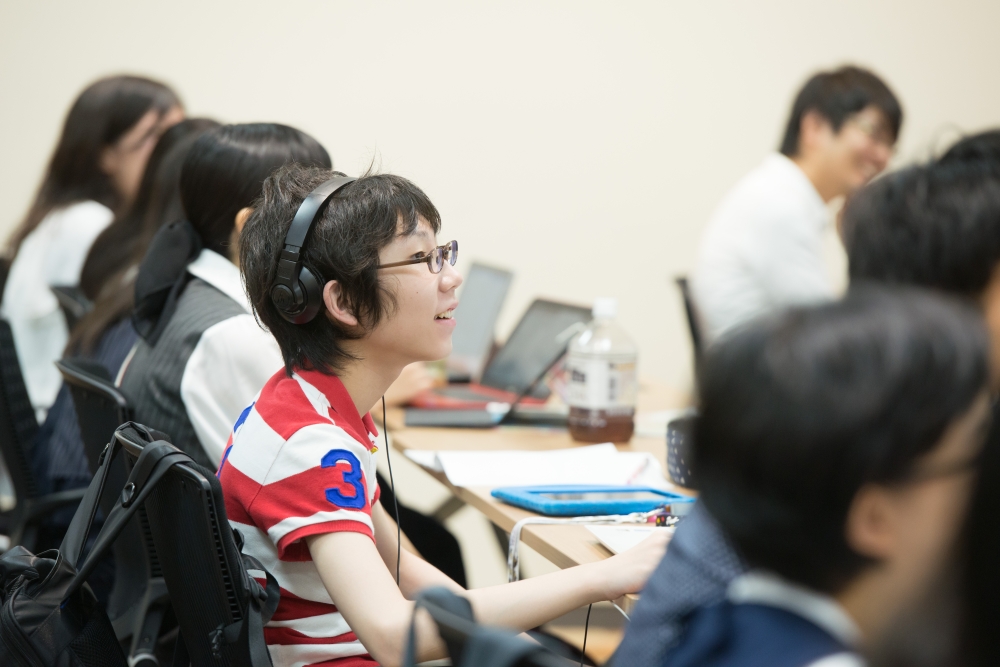Going a long way with super-short work Researcher pushes new job model for people with disabilities


© [elenabsl] / Adobe Stock
Despite all the talk of inclusion and diversity as core social values, many people with disabilities in Japan find their options dwindle fast as they get closer to completing their studies and start looking for jobs.
In a society where many companies recruit people fresh out of college and employees tend to stay with the same employer for years, if not for life, people with disabilities who are unable to fit into cookie-cutter, 40-hour-a-week work styles often find themselves shut out entirely from the job market.
Takeo Kondo, associate professor at the University of Tokyo’s Research Center for Advanced Science and Technology (RCAST), is trying to change that by advocating an alternative: “super-short employment,” where wages can be paid for working as little as 15 minutes a day.
“Employment should have nothing to do with time spent on the job,” Kondo said in a recent interview at RCAST on the university’s Komaba Campus in Tokyo’s Meguro Ward. “But Japan’s career model has centered on one where a person works 40 hours a week throughout the year—a model that is implicitly geared toward male adults without disabilities that often excludes others.”

A high school student gets a computer lesson during a workshop held in summer 2017 by DO-IT Japan, a program run by University of Tokyo researchers to help children with disabilities.© 2018 DO-IT Japan.
The 42-year-old psychologist, who joined the RCAST faculty in 2005, has for years run DO-IT Japan, a program that helps elementary to graduate school students with disabilities who possess leadership potential to utilize computer technologies and acquire self-advocacy skills so they can gain access to secondary and higher education and enter the job market.
DO-IT, which stands for Diversity, Opportunities, Internetworking and Technology and originally started in the U.S., was launched in Japan in 2007 by Kenryu Nakamura, a professor at RCAST. It has helped students regardless of their condition, ranging from attention hyperactivity deficit disorder, learning disabilities (LD) and autism, to those tackling hearing, visual and physical challenges.
Kondo said he was happy to see DO-IT participants succeed academically but found that students faced a bigger hurdle once they started looking for employment.
“One of our students who had difficulty writing due to developmental disorders was probably the first person in Japan with that condition to take the college entrance exam using a word processor (instead of handwriting answers),” Kondo said. “We also had the nation’s first student with LD (dyslexia) taking the standardized college entrance exam by audio (having the questions read to him). But all our students encountered huge hurdles—of a different kind—when they got to the job-hunting stage.”
Japan’s employment model doesn’t accommodate talented employees who, for example, have difficulty with mobility and need help with eating or using the toilet, or who are super-high achievers but can only work up to 10 hours a week, he said.
Existing quota system
The 1960 Act on Employment Promotion etc. of Persons with Disabilities has gone through several revisions and now requires a company with 45.5 or more employees (a part-timer is counted as 0.5 worker) to ensure that workers with disabilities account for at least 2.2 percent of its workforce. The government rewards companies meeting the quota with cash while slapping those falling short with fines.
But the scheme also stipulates that workers with disabilities put in at least 30 hours a week. Those working more than 20 hours but less than 30 hours a week are counted as 0.5 person in the quota system, while those working less are not counted at all.
The system’s incompatibility with short-time labor means that many people with disabilities haven’t had any other option than working at government-subsidized welfare work centers or community support centers, where pay is often far below the minimum wage, currently weighted at 850 yen ($7.69) as the national average.
That’s why Kondo, along with Nakamura, launched a project in 2016 to encourage companies to hire people with disabilities limited to working short hours. Named IDEA (Inclusive and Diverse Employment with Accommodation), it has so far collaborated with the mobile phone giant SoftBank to create a system where people can be employed for extremely short hours at the company’s head office in Tokyo. It has also linked up with the cities of Kawasaki and Kobe to create a regional employment system for jobs at municipal offices and private-sector businesses.
As of March 2018, the IDEA model had been used to arrange jobs for 46 people working a combined total of 347 hours per week at private-sector businesses.
At SoftBank, as of late June 2018, 24 people put in 165 hours a week in over 40 sections at its offices in Tokyo. In Kawasaki and Kobe, Kondo has worked with various departments within the municipal offices to find people with the desire to work. Both cities had their own job-matching programs, but had a hard time accommodating the needs of those wishing to work less than 20 hours.
The shortest length of time currently spent on the job by an IDEA worker is an hour a week, Kondo said, noting that the employees receive the minimum wage-level pay or more.
Kondo says the key to the program’s success is identifying the secondary, peripheral duties of employees in businesses to delegate to IDEA. Another crucial point is to define these tasks as precisely as possible for IDEA workers, to avoid confusion on the part of both the employer and employees and maximize the workers’ productivity, he said.
“We tell the companies, ‘Please don’t disengage work for people with disabilities,’” he said. “Instead we ask, ‘Who’s the most overloaded, overworked person in your section?’ The idea is, if someone else can take on these (peripheral) tasks, the workplace would benefit.”
Detailed job descriptions
Consultation not only with workers but also with their bosses helps differentiate main tasks from others, Kondo said.

Takeo Kondo, associate professor at UTokyo’s Research Center for Advanced Science and Technology.
“In Japan there is no custom of workers signing a document with their job descriptions,” he said. “We arrange work in such a way that people with disabilities are not expected to be generalists and can instead use the skills they excel at.”
With super-short employment, they cannot work like fulltime employees, who are expected to navigate flexibly by reading between the lines and picking up on cues to sense the mood in the office, he said.
“So we need to have other workers in the workplace understand that each job IDEA workers undertake needs to be defined in detail. We also need to find the workers who are suited for the defined tasks.”
Kondo added that the regional system that IDEA has built has made community-wide job arrangements possible instead of forcing the burdens solely on to individual employers.
IDEA workers undertake a wide variety of tasks. The most common type has been office work, such as fixing errors in the data scanned from business cards, reformatting documents into digital files and checking inventories, but IDEA workers can in theory be tasked with anything; in fact, they have handled everything from dealing with customers, cleaning and assisting with rehabilitation to translation and design.
Participating in the program does not help companies fulfill their legal quota, but feedback has been positive, both from short-time workers and businesses.
A man in his 30s, who works in a technology department at SoftBank, says in a video interview released by the firm that he appreciates the arrangement.
The man has schizophrenia and has found it hard to work 20 hours a week. He now works under 20 hours, undertaking various one-off tasks such as programming and sorting office supplies. “In previous workplaces, I had to keep my condition hidden,” he says in the video clip. “It’s a big relief mentally that I don’t have to hide. It’s a relaxing work environment because they take my condition into consideration and assign tasks I can complete.”
“By delegating some duties to short-time workers, other workers have been able to focus on creative tasks,” said Tomomi Yokomizu, an official at SoftBank’s CSR (Corporate Social Responsibility) division who is in charge of the short-time work program.
‘Job should match demand’
“Some employers and welfare officials often ask me whether they should create an internal super-short time employment system so people with disabilities can work there for life,” Kondo said. “But I tell them not to make that their priority. Our stance is that work needs to match the demand of the company. When the demand is gone, so should the job.
“If they make the continuation of employment a top priority, the workers are naturally expected to become generalists. It would end up excluding workers with huge gaps in tasks that they can perform and those they cannot. If this happens, employment for people with disabilities would never change from the current status of ‘special’ employment. That’s one reason why we have been trying to involve municipal governments, because they have a range of safety-net measures and can support the mobility of workers from one workplace to another.”

A high school student participates in a DO-IT Japan workshop in summer 2017. Kondo says he wants to instill a sense of hope in children with disabilities. © 2018 DO-IT Japan.
Kondo feels that many young people with disabilities are resigned about their future.
“I often encounter children who say they have no dreams,” he said. “They might have lost hope because the society is built on the premise that everyone is expected to be generalists and must be able to work 40 hours a week. There’s no creativity or innovation in society dominated by such fixed views about people’s abilities to work.”
While Japan’s employment practices won’t change overnight, Kondo says he wants to instill a sense of hope in youth.
“I want to change such a premise. If we could help change that, children with disabilities can have a positive image about their future and become motivated to study. They will no longer be driven to despair about education, employment and, ultimately, society.”
Interview/Text: Tomoko Otake






